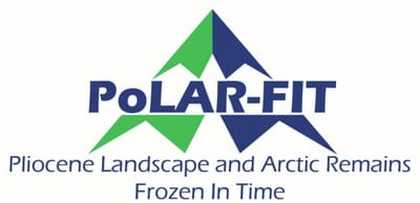PoLAR-FIT: Pliocene Landscape and Arctic Remails - Frozen In Time
Across the Canadian Arctic Archipelago, are field sites that yield evidence of a time when a boreal type forest reached the Arctic Ocean and the highest latitudes were inhabited by beavers, frogs, three toed horses, and giant camels. Most remarkable, though they are 2 to 4 million years old, the fossils from these sites, kept frozen in permafrost, are “sub-fossil” in quality. So, for example, fossil wood from the sites appears so well-preserved that it could be burned. Also the fossil bones are known to yield collagen (e.g., Rybczynski et al 2013). These sites and the associated sedimentary deposits provide key evidence for understanding how biological and Earth system processes respond and influence Arctic warming.
Pliocene Landscape and Arctic Remains Frozen In Time, or PoLAR-FIT is a new international multidisciplinary research team focussed on these Pliocene Arctic sites. The team includes multiple represented disciplines including paleoclimatology, geomorphology, geochronology, biogeochemistry, dendroclimatology, floral and faunal paleontology, evolutionary biology, and landscape ecology. Members working group span from early career to senior scientists.
Stay tuned! More news is coming on this group.
Pliocene Landscape and Arctic Remains Frozen In Time, or PoLAR-FIT is a new international multidisciplinary research team focussed on these Pliocene Arctic sites. The team includes multiple represented disciplines including paleoclimatology, geomorphology, geochronology, biogeochemistry, dendroclimatology, floral and faunal paleontology, evolutionary biology, and landscape ecology. Members working group span from early career to senior scientists.
Stay tuned! More news is coming on this group.
Reference:
Rybczynski N., J.C. Gosse, C.R. Harington, R.A. Wogelius, A.J. Hidy, and M. Buckley. 2013. Mid-Pliocene warm-period deposits in the High Arctic yield insight into camel evolution. Nature Communications. 4:1550 doi: 10.1038/ ncomms2516.

